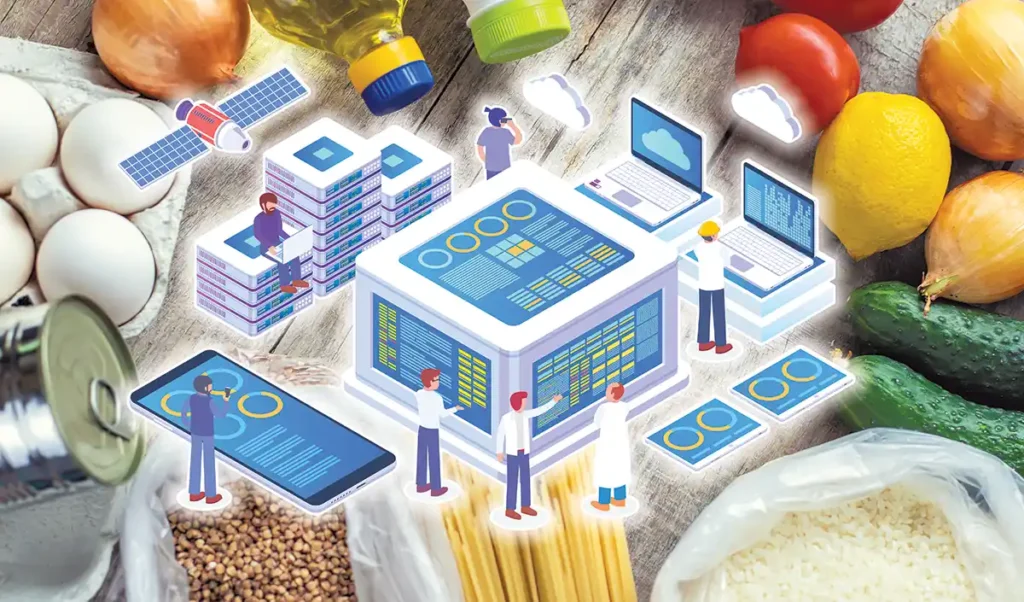Follow TFS on Google News
The food supply chain is a complex network that encompasses production, processing, packaging, distribution, and retail, from farm to fork. Efficiently managing this complex system is essential to ensure food safety, minimize waste, and meet consumer demand. In recent years, big data has emerged as a powerful tool to transform food supply chain management, enabling predictive analytics that improve decision-making and operational efficiency.
Big data refers to the vast amount of structured and unstructured data generated throughout the supply chain. This data comes from a variety of sources, including sensors on farms, weather forecasts, market trends, transportation logistics, and consumer purchasing behavior. Leveraging this data allows food supply chain managers to gain deeper insights into every aspect of the supply chain, from production to consumption. This powers predictive analytics, a branch of advanced analytics that uses historical data, statistical algorithms, and machine learning techniques to forecast future outcomes. In the context of the food supply chain, predictive analytics helps forecast demand, optimize inventory, and reduce waste.
One of the most important benefits of big data and predictive analytics in the food supply chain is the ability to accurately forecast consumer demand. By analyzing historical sales data, seasonal trends, and external factors such as economic indicators and social media trends, predictive models can forecast demand with high accuracy. This allows retailers and suppliers to ensure they have the right amount of stock at the right time, mitigating both shortage and overstock situations.
Leveraging the vast amount of collected data can provide restaurants with a variety of benefits, such as inventory optimization. In the food industry, efficient inventory management is essential due to the limited shelf life of perishable foods. Predictive analytics can analyze historical stock levels, sales patterns, and shelf life data to recommend optimal stock levels. This keeps products fresh and available, reducing spoilage and waste.
Predictive analytics can also increase efficiency throughout the supply chain by identifying potential bottlenecks and delays. For example, by analyzing transportation data and weather patterns, companies can predict disruptions and proactively reroute shipments, making delivery schedules more reliable and reducing the risk of spoilage due to delays.
Brick-and-mortar restaurants can help reduce food waste by using collected and analyzed data. Leveraging big data, companies can better coordinate production and demand, reduce excess inventory, and minimize waste. Additionally, predictive models can identify patterns that lead to spoilage, allowing companies to take preventative measures. Furthermore, data plays a key role in ensuring food safety by enabling traceability and real-time monitoring. Predictive analytics can identify potential contamination risks by analyzing data from various points in the supply chain, including temperature logs, hygiene records, and transportation status. This can shorten response times and make recall processes more effective, protecting consumers and reducing the impact of foodborne illnesses.
With continued advancements in big data technology and analytics, the future of predictive food supply chain management looks promising. The integration of artificial intelligence (AI) and the Internet of Things (IoT) will further enhance the capabilities of predictive models, enabling more accurate forecasts and efficient operations. However, there are challenges to overcome. Data quality and integration remain major hurdles, as the accuracy of predictive analytics depends on the reliability of the data collected. Moreover, ensuring data security and privacy is crucial, given the sensitive nature of the information involved.
Big data and predictive analytics are revolutionizing food supply chain management, providing unprecedented insights and capabilities to optimize operations, reduce waste and improve food safety. As technology continues to evolve, the food industry will increasingly rely on data-driven strategies to meet the growing demands of a dynamic marketplace, ensuring a sustainable and efficient supply chain for the future.


